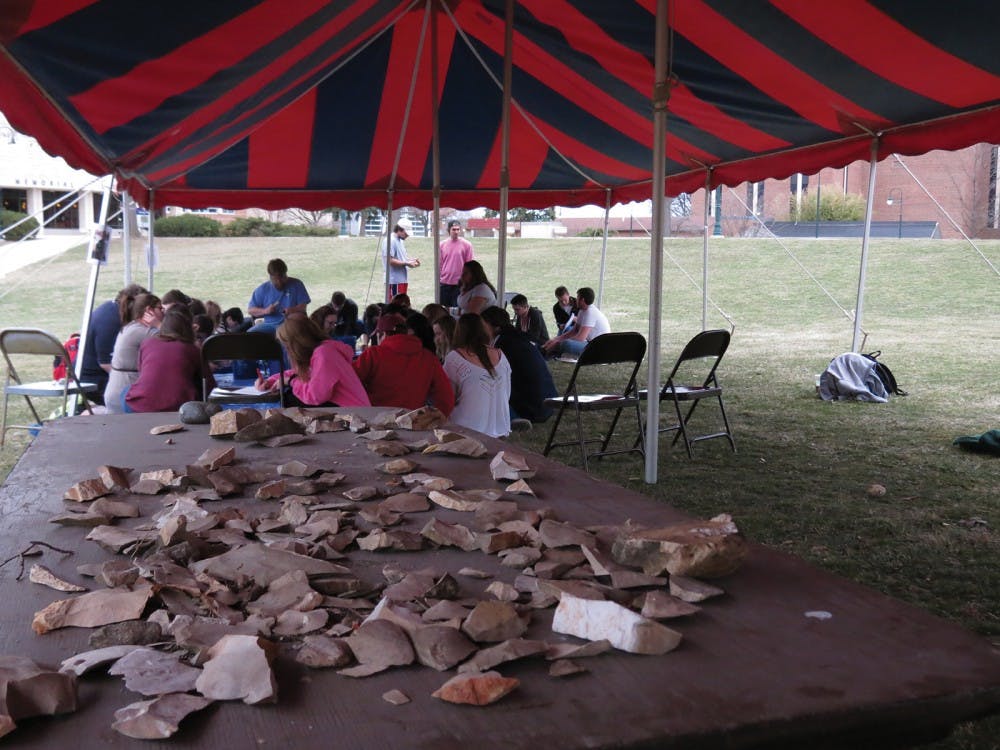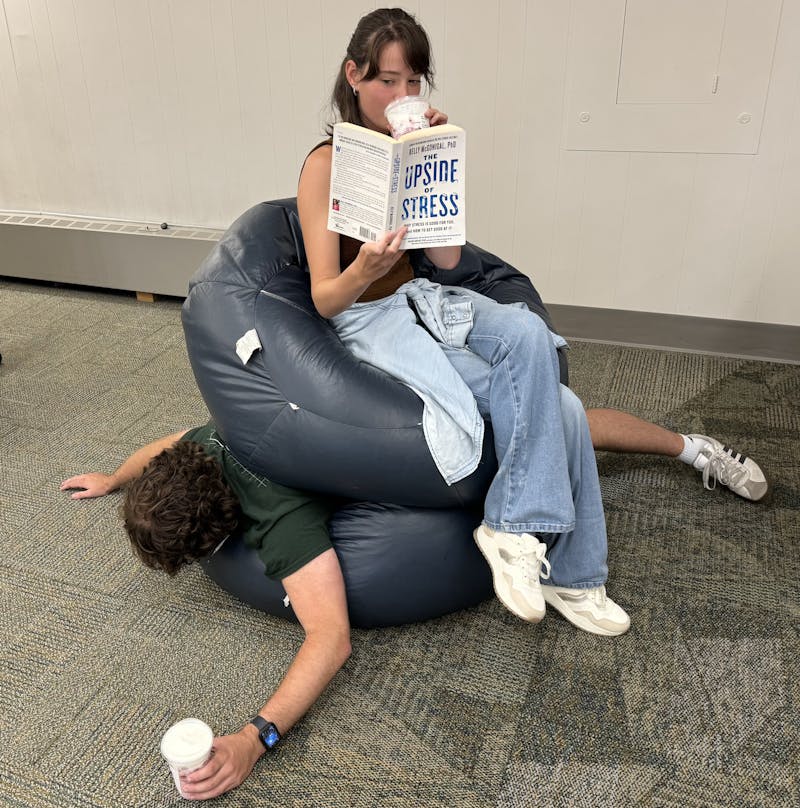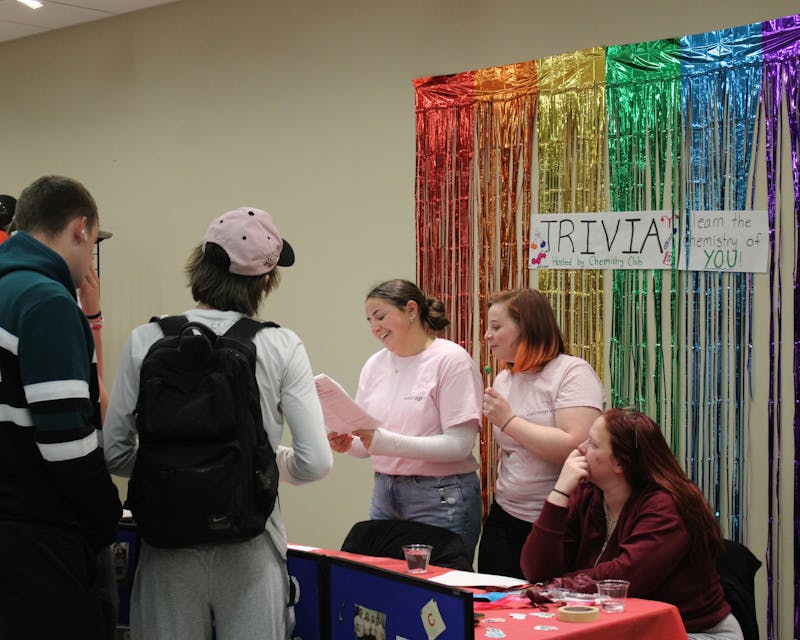The tap-tap of rocks being pounded away deafened the students who had gathered under the blue and red-striped tent centered in the quad.
“We’re a rock band,” joked Gunnard Lindgren, a stone tool-making expert.
Lindgren said he has been fascinated by Native American culture since he was a child and saw a demonstration of flint knapping — the tool-making process he demonstrated Thursday in the quad.
“It’s not something you can really teach,” Lindgren said. “The only way to learn it is through experiencing it.”
Students kneeled on the blue tarp as they pounded large round rocks into smaller slate-looking stones that flaked away with each strike. They were trying to make arrowheads or spears, but for most, it was just an experiment to see how to shape the rock.
Rocks with a high concentration of silicon are used to make tools. Silicon is the most abundant element on earth and is, essentially, the natural form of glass, Lindgren said.
The process of making stone tools is similar to a BB from a BB gun hitting a glass window. The glass fractures outward, and so does the rock when it is struck. The fractured pieces of the rock then break from the rock itself.
“I’ve had a piece hit me in the face,” sophomore Ali Cromer said. “That threw me off guard.” Cromer is a social work major and was dragged to the event by David Peterson, a friend who is an anthropology minor.
Peterson gently showed Cromer how to slide the rocks against each other to get the right angle. Peterson said he has never done anything like this before, but it is something that he hopes to do once he graduates.
“They look more like letter openers than anything [else],” junior Christine Emerick said. Her own arrowhead lay on the ground abandoned and half-finished, while she snapped pictures with her phone.
The arrowheads are actually quite sharp, Emerick said. Earlier, Lindgren was able to take a finished arrowhead and shave off a piece of a plastic bucket.




The Slate welcomes thoughtful discussion on all of our stories, but please keep comments civil and on-topic. Read our full guidelines here.